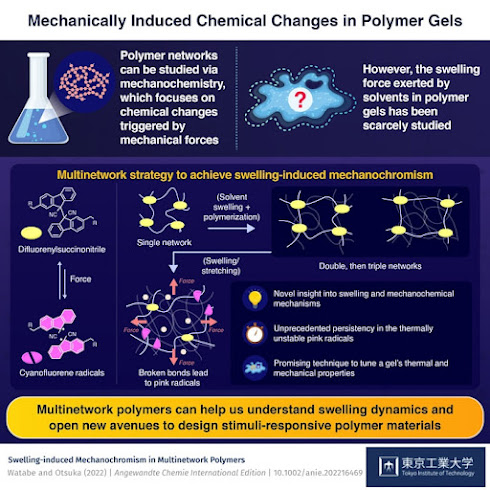Multinetwork polymer gels with color-changing linkers sensitive to mechanical stimuli provide a solid platform to study the dynamics of solvent swelling, as shown by researchers from Tokyo Tech. This innovative approach allowed them to gain detailed insight into the mechanical forces that a gel is subjected to when swollen after absorbing a solvent. Their findings will pave the way to developing new, mechanically responsive materials for many applications.
Polymer gels have become a staple technology in various fields, ranging from optics and drug delivery to carbon capture and batteries. However, there are still many open questions about gels and their network structure, which has prevented scientists from linking their remarkable macroscopic properties to specific molecular mechanisms.
One interesting way to tackle this puzzle is to study it from the lens of mechanochemistry; that is, chemical reactions that are triggered by mechanical stimuli such as compression, stretching, and grinding. To make this process easier, scientists can weave mechanophores into polymer networks. These are molecules that undergo predictable chemical changes upon exposure to mechanical stress. While there are many ways to apply mechanical forces to activate mechanophores in a gel, one has been studied in much less detail than others: solvent swelling.


.jpg)


.jpg)
.jpg)

.jpg)







.jpg)
